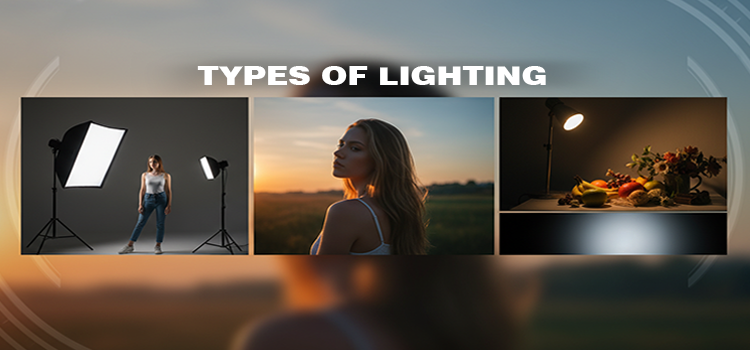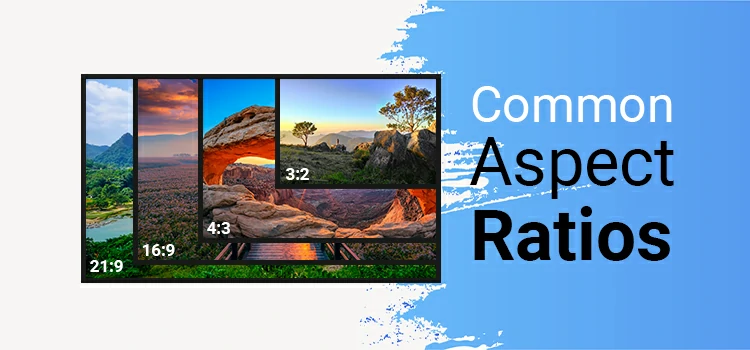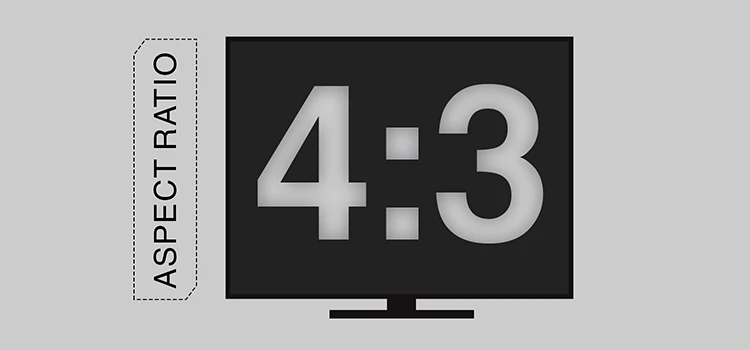A Comprehensive Guide to Photo Printing and Framing

Who doesn’t love photography? Barely anyone! Right from selfies to food photography to nature photography, people love doing photoshoots. But what about photo printing and framing? Do they worth it these days when people can store their photography in the memory card and device’s internal memory?
If not random selfies and snapshots, for family pictures, wedding photography, and other memorable events, people still prefer printing as well as framing photography. But printing and framing photography isn’t a cakewalk.
You have to wrap your head around dozens of factors to nail both subjects. In this write-up, we will provide you with an exhaustive guide on photo printing as well as framing.
Why Photo Printing is Necessary?
Why print your photos, yeah, that’s the question that comes right at the beginning. Gone are the days when you had to print photos to see how everyone looks in photography. These days, you can turn on your computer, and here it is! Your photos are all set.
But there are strong and rational reasons why you need to print your photography.
Suggested Article– How 3D Printing is Changing the World of Manufacturing
Lets You Value Them Wholly:

When you have thousands of photos on your computer, things can get chaotic, can’t they? And it becomes difficult to appreciate your best photos when they’re retained among many other dull photos.
On top of that, you can only view your photos when you’re on your device. So, if your device malfunctions or dies, you can’t view your photos until it gets fixed.
But you would like to keep your photos on a more permanent display, right? You would like to fully appreciate your desired pictures, the shots that you’re proud of? That’s where printing comes into play.
Apart from that, if you print your photos, you can hang them wherever you like and they’ll always be there. You can gaze at your printed photos and be proud of them.
Helps Retain a More Permanent Record

Electronics fail and accidents happen, thereby making storage drives get lost. And then your valuable photos, the ones that took you years to produce are gone – in a heartbeat unless you’ve printed them.
This is Because prints are a permanent copy of your hard work. Prints can continue for decades – even centuries.
Once you are done printing your photos, you don’t have to worry about losing them. Because you’ll always have them in physical form!
Allows You to Display Work at Galleries and Art Shows

If you’re seeking ways to make money as a photographer, then printing your photos can make a lot of difference. One of the ways photographers make a buck is through galleries and art shows. And you can’t take part if you don’t have prints!
There are online options for earning money with your photography. But galleries and art shows are something you should consider. And if you decide to adopt them, then you’ll have to make some prints!
Suggested Article– Best Places To Sell Photos Online
Which Materials You should Use for Printing Photography?
Several printing materials you can think about, including Canvas, Acrylic, Metal, or Photo Paper.
Now that you make out the value of printing your photography, it’s time to ask yourself.
Make Sure to Calibrate the Monitor
Do you have any knowledge about calibration? When was the last time you calibrated your monitor? Or, you haven’t done it yet?
Having a correctly calibrated monitor is the most crucial factor when you want to equip images for printing. Without a calibrated monitor, you won’t know what the image actually will look like.
Calibrating the monitor simply means balancing and correcting its colors, typically carried out by using a spectrometer and calibration software. This is something everyone should go for even if they don’t plan on printing a photo. If the colors of your monitor are turned off, it means that all your images look different on other devices.
Save your Print File in Adobe RGB or sRGB
We know it might sound enticing to save your print files in ProPhoto as it’s a larger color space but the fact of the matter is that most monitors and printers can’t show that wide range of colors.
If you go for printing an image that’s saved in a larger color space than the printer can handle can lead to unflattering images as the printer is out of gamut which means the colors aren’t able to be reproduced on the printer.
Most print labs will ask for your files in sRGB but specific high-end locations might be able to print on Adobe RGB. This is something you should make sure to check.
Saving images as 8-bit is Better
You are likely to know the terms 8-bit and 16-bit but you may not know their meaning or how they impact your photo.
To put it simply, a bit is the number of tones available to each color. So, an 8-bit image holds 16,000,000 colors as compared to a 16-bit image that holds 28,000,000,000 colors.
So why you must save it as 8-bit if there are so many more colors in 16-bit? Naturally, you would want all that extra information. The point is that we suggest editing your images as a 16-bit file but when saving them for printing, you should opt for 8-bit.
Pick the Correct Dpi
Dpi stands for dots per inch which is a key factor when talking about print resolution as it deals with the amount of dots printed in an inch. The more dots you have the more detail you have in your photo. This also implies that the lower the resolution of your file is, the less detail it contains.
We would recommend you save your images at 300 dpi when printing. You may get away with a lower Dpi for smaller prints but when it comes to larger prints, you will lose detail.
Don’t Forget to Resize your Images
Resizing the image might not be a vital step to prepare images for printing but we would recommend not printing the full-size image. Additionally, when printing large images, we need to enlarge the file.
Resizing the image isn’t that time-consuming if you’re not enlarging the image. All you have to do is open the image in Adobe Photoshop then go to Image -> Image Size and choose the size you wish to print in.
Crop the Images
If you are using a full-frame camera or an ASP-C sensor (cropped sensor) you have an aspect ratio of 3:2. This is a correct ratio for a 4×6 or 8×12 print but the aspect ratio transforms when printing other standard sizes such as 5×7 (7:5) or 8×10 (5:4).
Remember when you’re doing image cropping for print you may lose some of it due to the aspect ratio. You should always crop the image to the correct aspect ratio before sending it to the printer since an array of print labs automatically crop without taking the image and composition into account.
Make Sure to Sharpen the Image
Finally, you have to sharpen the image as the final part of your workflow. This should be executed after cropping it to the preferred size.
If you’re a Photoshop user, you might already know that you should resize and sharpen an image to make it optimal for the web. When equipping an image for printing you also need to sharpen the image but the methods will slightly differ.
Carry out Soft Proofing
Soft Proofing is a simple method leveraged to visualize what the printed image will look like. You can carry out this in both Adobe Lightroom and Photoshop as well as in other photography-related software.
When Soft Proofing, you’re able to select between different color spaces and different printers. With the correct printer and color space selected, you can continue making tweaks to the saturation, color balance, and sharpness until the image appears like the original version.
An identical technique that was more common amongst photographers in the past was Hard Proofing, which means printing a test image and then making further tuning afterward. While many still do this today, it is a pricey and time-consuming method, especially considering you’re able to get nearly as good a result by using Soft Proofing.
How to Choose a Frame for Photography
Several frame styles are there that are in sync with photography. The key point to consider is what styles, colors, and frame sizes would work with the specific photograph you want to frame.
When choosing your picture frame, think about:
The subject of your photo – Some subjects look cool with a slim and sophisticated frame. Others might have an optimal effect with a more ornate frame. Consider the frame style that will do justice you’re your photos.

The colors – Think about the frame color that will best enhance your photo. Classic white, black, or wood colors are a safe bet if you’re doubtful. If you want a pop, choose a color that you can find in the photograph or a contrasting color.
The picture size– Definitely, you need the perfect picture frame size to suit the size of the print. Just think about how much mat space you want around the print to determine the right picture frame size. Some photos look outstanding with wide mat boards which let the photos breathe. Others look perfect with a more classic, thin mat board.
The existing decor in your home – Don’t just restrict the photo that appears in its frame, also consider what it will look like in your home. It’s pivotal that the framed art complements the existing style of the room.
The material the photo is printed on is key as well. If the photo is printed on canvas, it might suit a different frame style or even no frame at all compared to a photo printed on fine art matte paper.
Suggested Article– What Is Color Theory? A Comprehensive Guide
Best Framing for Photography
Some of the most in-vogue ways to frame photographs include:
Modern style frame – Modern frames are minimalistic and slim too. Usually, produced in colors such as white, black, or natural wood. These frames avail the power of white space and let the image do all the talking. They’re ideal for futuristic, industrial, and Scandi-style homes.
Ornate frame –Ornate frames boast a texture or pattern on them and are usually finished with a gold or silver color. Ornate frames often function well with photographs that align the level of intricacy. But they can also work with simple and understated photos which contrast with the fancier frame style.
No frame (canvas) –Photographs printed on canvas can be expanded over stretcher bars and displayed without a frame. If you fancy for the look of framed canvas art, a frame can be added after the canvas is extended.
How Big a Frame should be for Photo:

It all banks on the final look you want to notch up. Mat boards are deployed in the space between the frame and the print to help the eye focus on the image. Even though there are no hard and fast rules, the photo frame is typically thinner than the mat board.
A mat board can be any color, although it’s salient it does not detract from the image. If you’re unsure, play it safe by using a white or cream mat board. If you want to color, pick one that complements the colors and tones in the image.
In some cases, more than one mat board can be leveraged to attain a more layered look that draws the eye in. This works very well with some photography art but may surprise others. It’s best to pick the mat style based on the specific photograph you are framing.
Pick up Frames in Bulk

If you’re like me and you love to fill your walls with photographs of your family, then it’s time you start snapping up frames in bulk. Go to your local framing store and talk to them about buying in large quantities. Most stores will offer a discount if you buy multiple frames of the same size.
When it comes to custom-built frames, you can get a plummy discount by ordering several of the same size and style at one time. It will save you a great deal of money and the work looks very cohesive hanging on the gallery wall.
Good clear borders

Don’t be mingy with your mat border size – small borders rarely beautify the image.
Also, how are you going to suspend the pictures? If you are picking a large picture for your home or are planning to exhibit very large prints, ensure the wall you are hanging the picture on can safely take the weight of the framed picture and also the fittings needed to suspend it.
How do you measure frames?
Frames are always gauged from the inside of the frame. That is actually the size of a piece of glass that will fit in the frame. The actual size of the frame is 1/8″ larger than indicated to let room around the glass, mats, image, etc. And the actual rabbet size of an 8″ x 10 ” frame is 8 1/8″ x 10 1/8″.
Matting/framing your prints for exhibition and archival purposes
First of all, if you are going to matt and frame, don’t print right up to the edge of the paper.
Colored matt board is a big no at most exhibitions, but if you’re selling a print that counts on a color, then pick what works most photographers are better at taking the photos than deciding how best to show them.
If you’re hiring someone to make mats for you, consider thicker mats, which can set your prints off nicely. Buy a cutter bigger than you might first think of as it just makes things easier. Cutters appear on auction sites every now and then but do try and see one in use if you are spending sufficiently.
Hang your Printed Photo on Wall:

When deciding where you want to hang your wall art, do keep sunlight in mind. Most prints and materials usually don’t have very good UV protection. And the chemicals used in the ink during printing can interact with air and light, triggering a photo fade.
Consequently, it will slash the contrast in the print and ultimately botching your original artwork. Leveraging acid-free paper can help enhance the longevity of your print but it is still recommended to keep them away from bright direct sunlight.
In order to prevent this, do not hang your picture frames in direct sunlight or on walls facing east or west. If it is essential that your prints will come into contact with direct sunlight, try using a framed with UV protection tinted glass.
Also put focus on what type of print finish you use as glossy prints can pick up a lot of reflections, which means a brightly lit room or strong sunlight and lots of windows can make these hard to see, in this situation a matt or luster print might be an optimal solution.
Photo Framing Options
So, what are the photo framing options you have available? There are several printing frame online options available that you can take advantage of-
Wood Frames: Wood frames are a classic and cool option that never looks outdated or goes out of style. They’re at your disposal in different colors and finishes, and they offer a warm and traditional look too.
Metal Frames: Metal frames are a sophisticated and sleek option. They’re at your fingertips in different colors and finishes, and they offer a more contemporary appearance.
Acrylic Frames: Last but not least, acrylic frames are a natty and trendy option. They’re lightweight and shatterproof, making them a fantastic option for high-traffic areas.
To Conclude
Both photo printing and framing play a big part when it comes to preserving your photography for decades. If you frame your desired photos and hang them on your home wall, you can remember them for a long time as they will be in front of your gaze every now and then.
Just saving them on your pc or smartphone is unsafe and also it doesn’t evoke memories. Another big difference is that you can display framed pictures way more easily compared to digital pictures. Apart from that, if you make an art gallery, it’s a snap for you to show your works to visitors.
So, ensuring quality photo printing and framing is inevitable if you want to view as well as display photography full of comfort!







